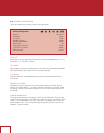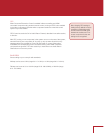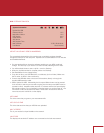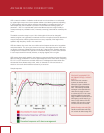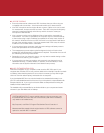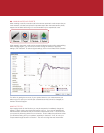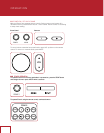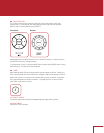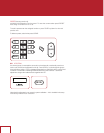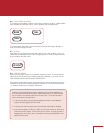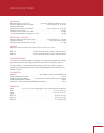
36
If you did change settings such that a large portion of the bass is being boosted, as
would be shown by a wide range of the green corrected curve having higher level than
the red measured curve, chances are that your equipment will be stressed more than
the sound will improve. There is very little to gain by doing this.
Instead, address the real reasons behind the areas which could be improved but are
beyond what electronic correction is meant to fix, for example large dips in the in-room
response. These are not uncommon and can almost always be cured by repositioning
the speakers, especially the subwoofer, and repeating the measurement.
Can one set of measurements be used across both profiles but with different
settings applied? Can the subwoofer be disabled in only one of the profiles?
THE ANSWER TO BOTH qUESTIONS IS YES, AND THE PROCEDURE IS:
• When starting the measurement (Automatic or Manual), set the profiles to be
the same.
• In Manual mode, open the Targets panel and change the settings as desired –
the same measurements will be used across the different profiles.
• To remove the subwoofer, select No Speaker from the pull-down menu.
You may be tempted to remove the center and surround channels to create
a profile for playing 2-channel sources only from the front left and right
speakers, but this is unnecessary because if the listening mode is “None”
during playback, sound will not be redirected to the center and surround
channels.
MAX Eq FREqUENCY
Default correction range is 5 kHz but this may be lowered for experimentation or
comparison.
ROOM GAIN
If you wish to experiment by flattening room gain, you can try it by setting this to 0 dB.
Note that auto-detected room gain will be at or near 0 dB if bass absorbers are used or
if the speakers are not particularly responsive in the bass region.
4.7 ADVANCED SUBWOOFER TARGETS
Use of these controls is recommended only for the advanced user who understands the
technical capabilities of the subwoofer model in use. When in doubt, use auto-detected
settings and as always, check whether changes are worthwhile by listening to a variety
of source material before and after changing the targets.
SUBWOOFER HIGH PASS ORDER
Here you may set the low-end slope. If you have a subwoofer that has strong output
below 20 Hz, or if it uses its own low-frequency input protection (check with its
manufacturer, don’t assume) then selecting Flat may improve system performance.
If on the other hand you have a subwoofer that is designed to be flat to a certain
frequency then have response that drops very quickly below that, manually selecting a
steeper than average slope may be beneficial. Normally, ARC does not auto-select a
slope that is steeper than fourth-order (24 dB per octave rolloff) although up to eighth-
order (48 dB per octave) is available through this manual selection.



